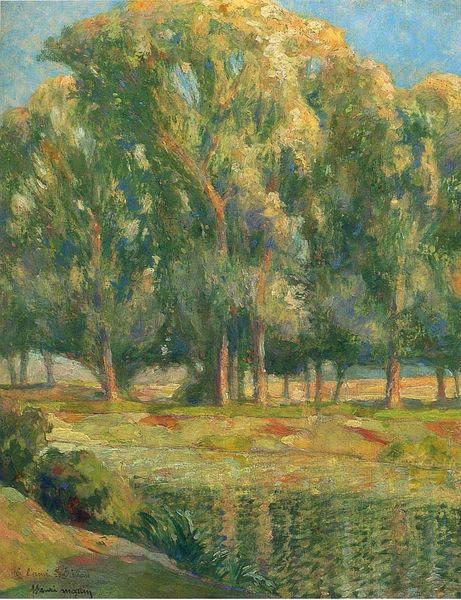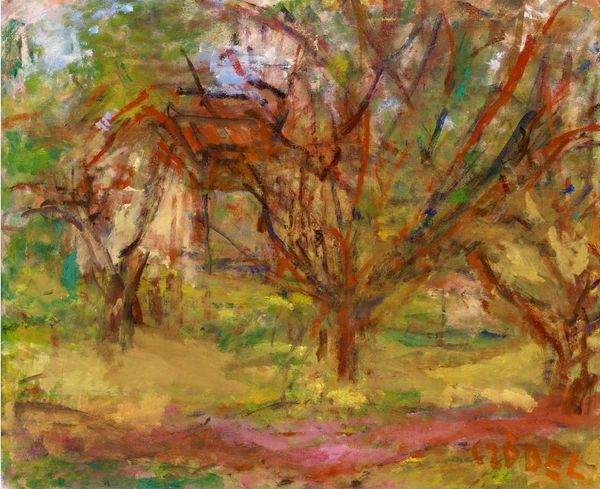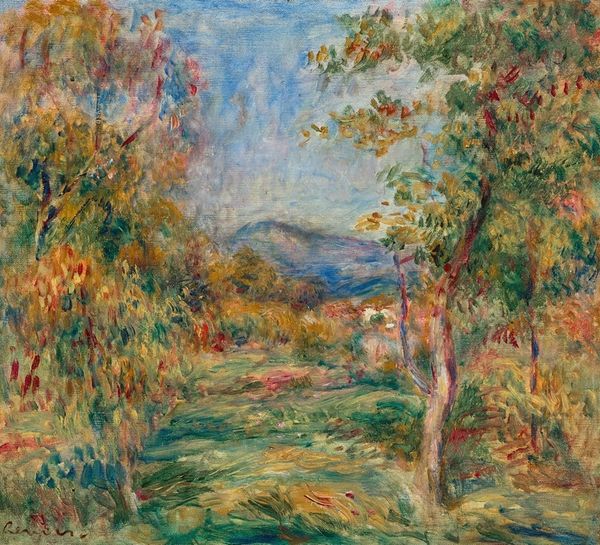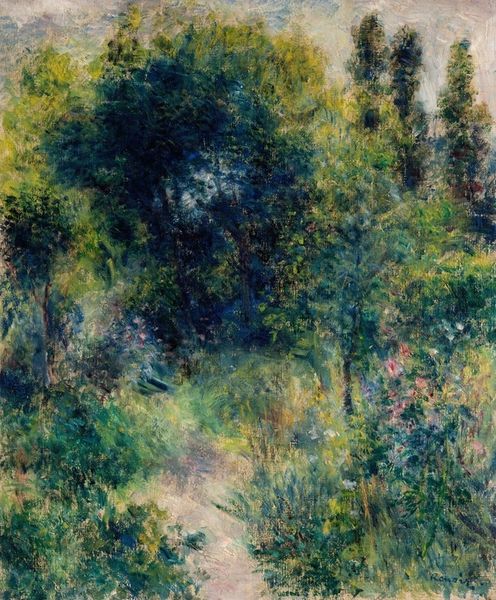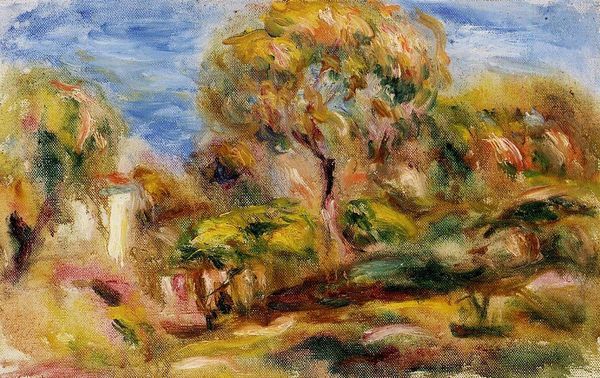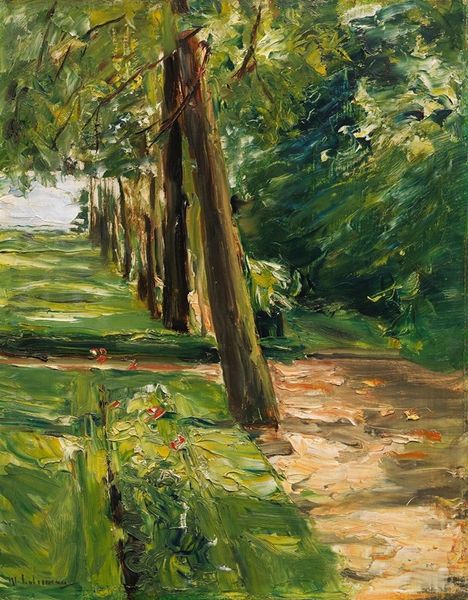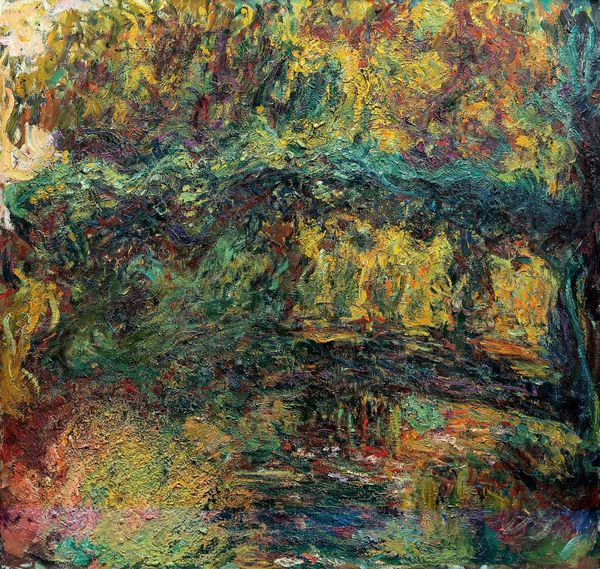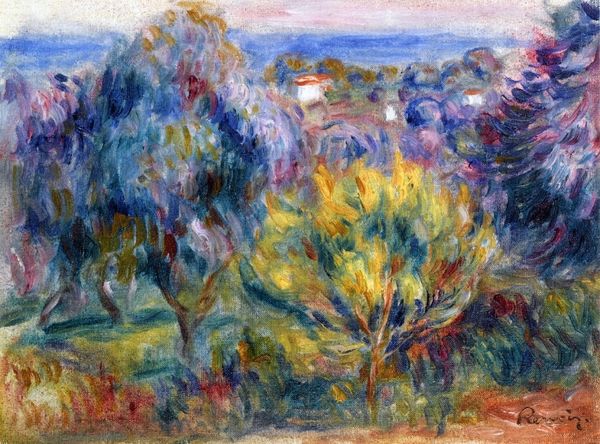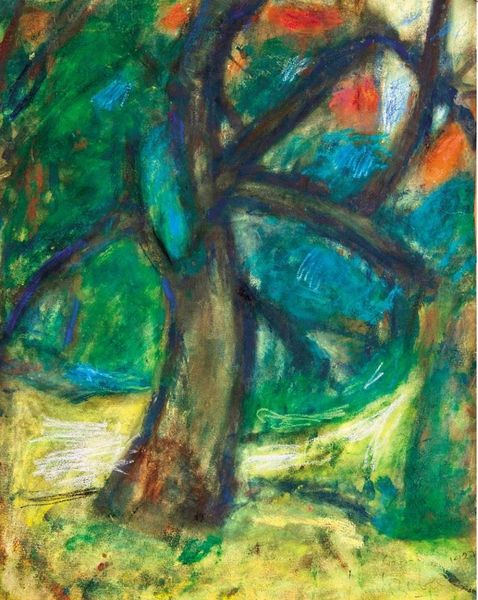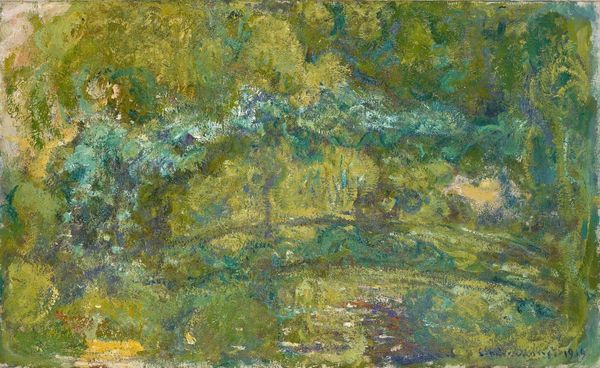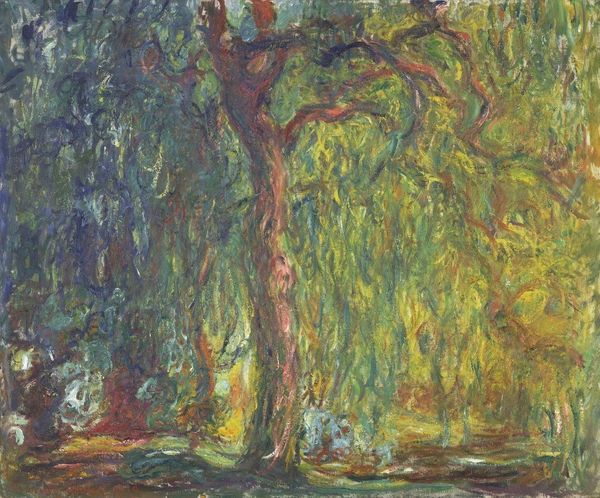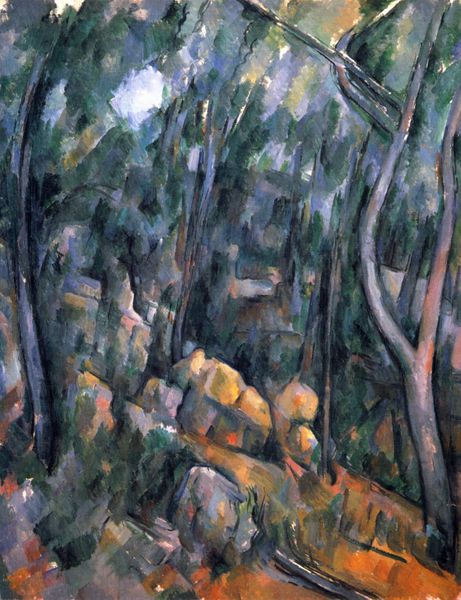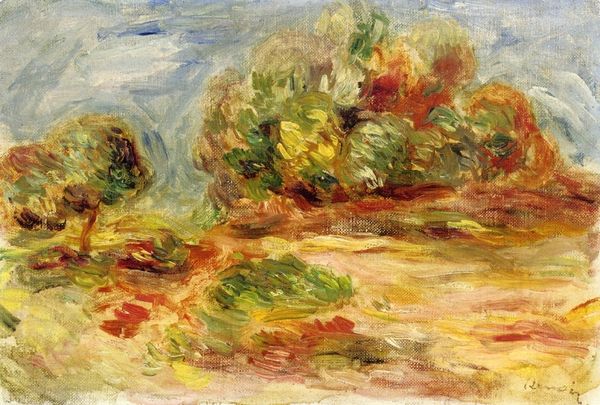
Copyright: Public Domain: Artvee
Curator: This is "Pré et arbres", or "Meadow and Trees," by Pierre-Auguste Renoir, painted in 1893. The work demonstrates the plein-air painting style through its depiction of the French landscape in oil on canvas. Editor: The overall effect is immediately captivating, though slightly unsettling, don’t you think? There’s an imprecision to the brushwork, almost hurried in places, which contributes to the overall dreamlike quality. I'm especially drawn to the way he captures the diffuse sunlight filtering through the foliage. Curator: I'm interested in Renoir’s method of production. The materiality of oil allows him to build up layers of color to mimic nature. When you view it considering the societal context of its time, what do you notice about how class or industry could be inferred? Editor: It definitely suggests the burgeoning art market. Landscapes, particularly Impressionistic ones like this, were becoming increasingly popular with the rising bourgeoisie. They offered an idealized vision of nature, removed from the industrializing urban centers, yet affordable and easy to acquire. There’s also a subtle escapism at play. The lack of overt social commentary allowed viewers to project their own desires and aspirations onto the scene, reinforcing the status quo in a way. Curator: Exactly! And how is Renoir handling the actual labor, in applying layers of pigment. The brushstrokes visible contribute to a flattened picture plane. It reflects a movement away from the traditions and expectations for "fine art". Editor: You can see this piece working within a larger ecosystem. Renoir showing works in dealer-led exhibits helped legitimize impressionism for middle class buyers. Beyond the canvas itself, Renoir's image became widely reproduced as engravings and photographs. This would contribute to both its commercial value and broader societal impact, changing the ways future generations perceived landscape itself. Curator: These nuances reflect both the artist's intent and the consumer culture they engaged with. Editor: It leaves you contemplating the constructed nature of idyllic beauty and its purpose as we move forward. Curator: Indeed, considering Renoir’s artistic decisions alongside market influences adds considerable depth to experiencing this piece.
Comments
No comments
Be the first to comment and join the conversation on the ultimate creative platform.

